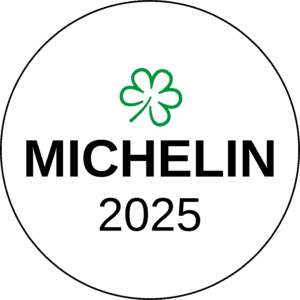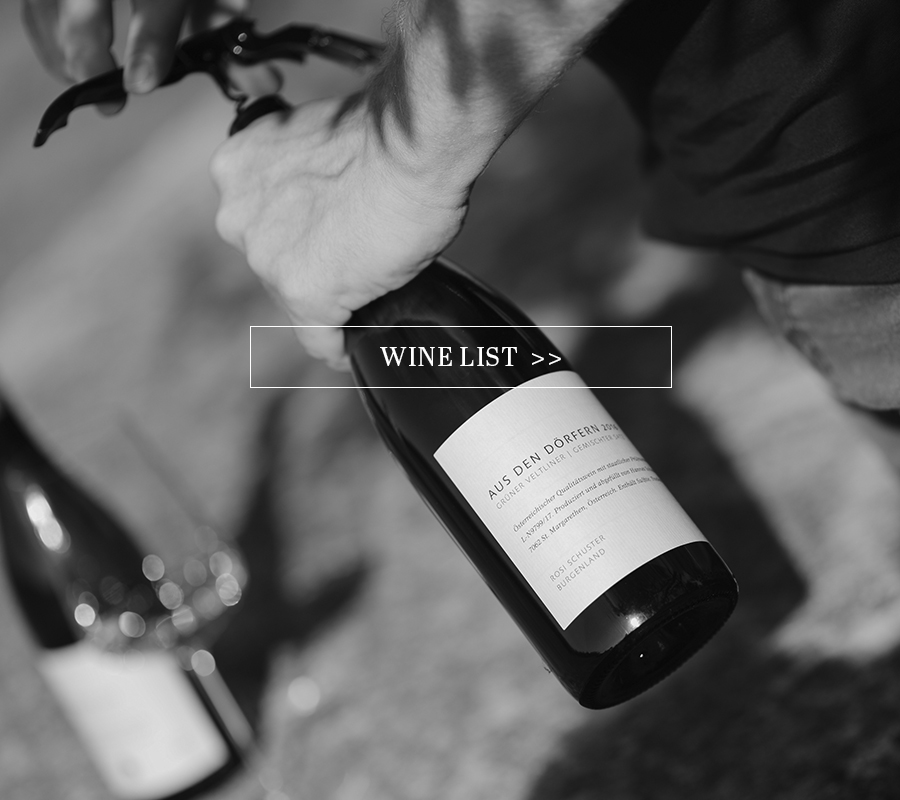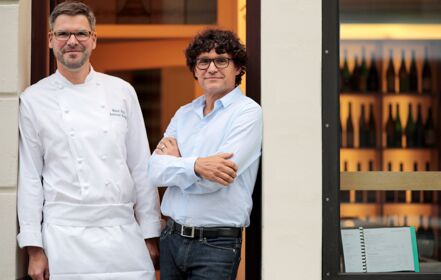Our winemakers: originals since 1989
Personal contact, wine tastings together, discussing with each other, getting a feel for how the winemakers work on site:
that’s our understanding of an ideal partnership between winemakers and gastronomy. We travel to old friends and new discoveries in Austria and Germany several times a year. As that is the only way we can understand and taste the wines’ location, quality, drinkability and individual character.
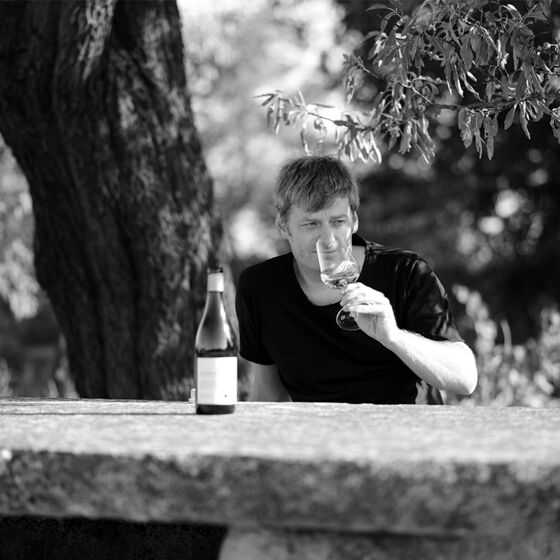
Schuster
St. Laurent is a genetic special case
The name Schuster is certainly not unknown in the Austrian wine world. Rosi Schuster, Hannes’ mother, created an internationally famous wine in the 1980s with the “CMB” cuvée, which could be found on almost every good wine menu. Her son Hannes had big footsteps to follow. And in doing so he searched for and found his own path. Today he is the undisputed master of the St. Laurent in Austria and has created wines out of this much-derided grape variety, which have probably never existed in this form before.
The quiet, reserved winemaker who is always deep in thought reduces the underestimated grape variety to the essentials thus revealing its true greatness and potential. Perhaps this is due to the fact that the grape variety could be a mutation of the Pinot Noir. Sophistication | charm | polish are the focus, the style of red Burgundy comes to mind. Schuster’s wines are not comfortable, understandable or bold but delicate and finely structured. They demand the wine drinker’s attention, willingness to succumb to the unusual.
The different soils around St. Margarethen influence the respective wines. In Zagersdorf, it’s the heavy clay soils streaked with limestone that give the St. Laurent its oily richness and spicy, herby coolness. The sandy, lime-free soils in St. Margarethen make the Blaufränkisch from Hannes Schuster dense, rich in finesse with powerful minerality. It appears to be only logical that he is in close contact with his friend Roland Velich, the Blaufränkisch specialist from the Moric vineyard.
Moric
I want to create originals
Roland Velich took the very old Blaufränkisch grape variety for this. He presses wines from this that indicate their origin. With the Blaufränkisch he wants to create a reference in Burgenland, like the Pinot Noir is in Burgundy or the Riesling is on the Mosel. As Blaufränkisch grapes in particular are corruptible and can be turned into nameless and homeless universal wines in the hands of skilful winemakers. However, Velich wants to know what this indigenous, therefore original grape variety can really do. Which is why he is offering it the best possible conditions on both the vineyard and in the cellar.
The result of his efforts can be seen in the Blaufränkisch “Alte Reben”, for example. The vines for this are between 50 and over 90 years old, some with ludicrously low yields per root stock. Having been picked exclusively by hand, they are fermented spontaneously in open wooden vats. There is no fining or filtering of the wines. There is minimum intervention in what is happening, the wine makes itself. The result is a wine full of finesse, almost delicate, with a sheer bottomless aromatic depth. Punchy | concentrated | elegant. The antithesis to the sweet, voluminous wines from many Burgenland colleagues. No other Austrian red wine has ever been so highly rated internationally. Roland Velich looks for finesse and fineness in his wines, they are fantastic wine discoveries for anyone who doesn’t count on what is expected of a grape variety but is willing to be surprised and inspired by such a “well-known” grape variety as it is cultivated at the Moric vineyard.
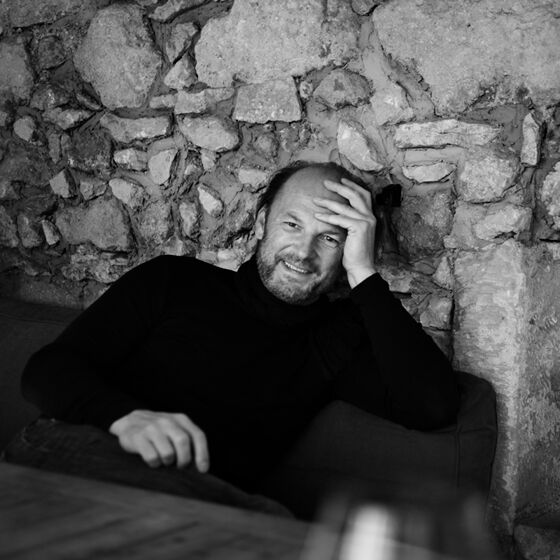
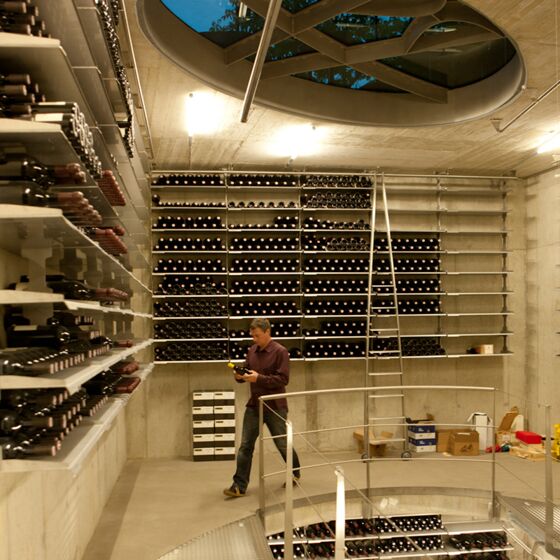
Heinrich
For best enjoyment, shake before pouring
More than 30 years have passed since the Broeding brought the wines from Heike and Gernot Heinrich to Germany. And we have been delighted with this decision ever since. The Heinrichs’ wines are not just among Austria’s elite wines, they are famous all over the world in the meantime. Created with a calm and reason that allows for a long time in the cellar and has no idea what a hectic pace or ingratiation with international critics is. Heike and Gernot have consistently further evolved, including focusing on biodynamics and discarding the usual additives that are not really necessary for quality wines.
More attention to the eternal cycle of nature, allow for more nature, that’s a brave step with 90 hectares of vineyards. Despite this, the Heinrichs have redefined the style of their wines time and time again over the years while maintaining a consistently high quality. Standing still is not their thing. This also required courage as not all their wines are self-explanatory, like they used to be. Heinrichs’ wines also require openness | curiosity | experience from wine drinkers.
The best example of this development is the new wine range, in the deliberately old-fashioned spelling “Freyheit”. Its Welschriesling, underpinned by yellow-fleshed fruit, meadow herbs and the freshness of grapefruit zest. It allows itself the freedom to be bottled just minimally sulphured and unfiltered. Packed with natural yeasts in the bottle, the Heinrichs prefer to provide instructions for use: “For best enjoyment, shake before pouring”
Hirsch
Anyone can take the easy path
Johannes Hirsch has fought for his path like few others on the wine scene. He used the screw cap early on, very early on. He made a lot of enemies in Austria because of this, a buying boycott (!) was called for. Johannes held his ground nevertheless and a few years later he was awarded as Winemaker of the Year for his pioneering achievement. What made other people hard and bitter, did quite the opposite with Johannes. He is always in a good mood, relaxed, optimistic and still an unwavering fanatic of quality. Obviously one does not rule out the other.
Johannes Hirsch and his family devote themselves to white grape varieties with great passion and heart and soul: Grüner Veltliner and Riesling can be found in the biodynamically farmed vineyards. In keeping with the motto “less is more”, Johannes Hirsch gives his wine brilliance | tension | vitality thanks to gentle grapevine pruning and meticulous soil work. The soil makes the wine, says Johannes about his work. In his opinion, the location influences the wine’s character even more decisively than the grape variety. Which is why you can mainly find Johannes and the Hirsch family in the vineyards. And not in the lab.
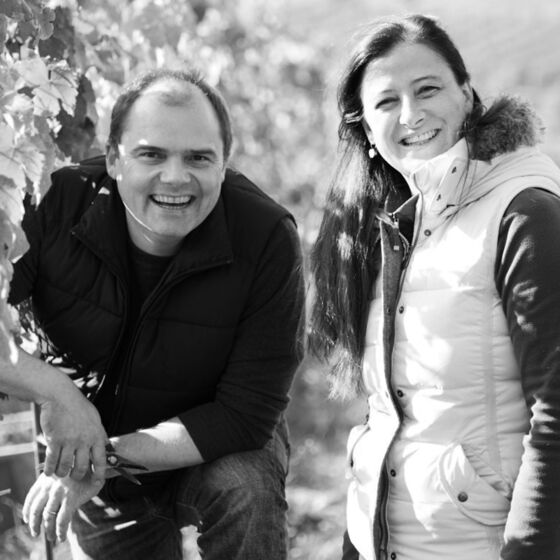
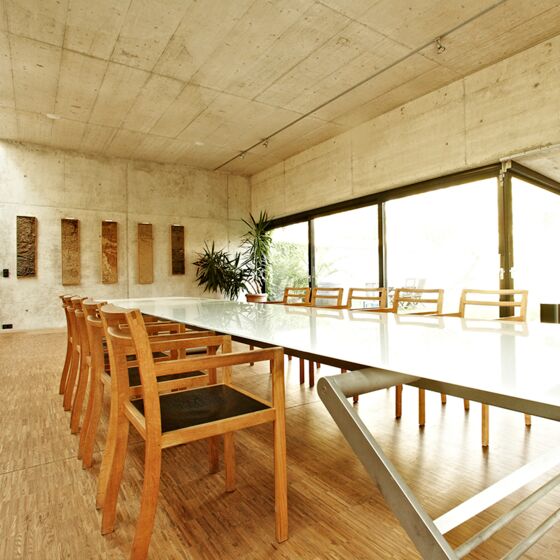
Loimer
Working sustainably and respectfully in partnership with man, vines and nature
He was a young wild one when he took over his parent’s vineyard in 1998. But unlike many other “wild ones”, for Fred Loimer this term was never an end in itself that is expressed in extravagant labels. He tried, experimented, questioned, doubted and left no stone unturned. Which is expressed not least in the vineyard’s unusual new building. Derided by the locals as a “black shoe box”, the building is considered to be an architectural masterpiece outside the Kamptal valley today.
Fred Loimer manages without any big words and exaggerations, “showing off” is not his thing. He doesn’t make a great deal of fuss as a person or as a winemaker and definitely not in his way of making wine. Almost two decades after taking over the business, Fred still has enough energy to strike out in new directions with insight | restraint | focus on the locations. He has been farming his vineyards biodynamically since 2006. He founded the “respekt” association together with winemaker colleagues to achieve even more progress here. With the declared aim of being able to implement biodynamics across the board in wine growing. His wines have been gaining complexity, originality and depth since the change.
Fred Loimer’s vineyard is undoubtedly one of the most innovative and best ones in the whole of Austria. Regardless of the size. Besides his Kamptal wines, there is also incidentally fantastic bottling from his vineyard in Gumpoldskirchen in the thermal spring region.
Hirtzberger
Distinctively and genuinely communicating origin, variety and vintage
Hirtzberger. A name that is recognised the world over. A name that is well-known throughout the entire world of wine. A name that is unequivocally associated with his region. And vice versa. As Franz Hirtzberger is always mentioned in the same breath as Wachau. He is the fifth generation of the family to manage the vineyard. 20 hectares of vines doesn’t sound spectacular but the majority of them are situated in the best locations in the whole of Wachau.
Franz Hirtzberger was the Chairman of and leading figure in the “Vinea Wachau” association for winemakers for many years and stands for the uncompromising style that has made the region so famous more than almost anyone else: dry, natural wines in the three quality trademarks Steinfeder, Federspiel and Smaragd. Herzberger’s Grüner Veltliner Honigvogl or Riesling Siegerriedel have been cult wines for years and are coveted rare wines on the international wine market. Their longevity is virtually legendary. The fine and rare white Burgundy varieties are unjustly a bit overshadowed. All of them, like the Rieslings and Grüner Veltliners, are classic | punchy | powerful, full-bodied with a unique varietal character and very good length. And this also applies to the large single vineyards: with three or more years of maturing in cellars, they accumulate into a unique volume and complexity.
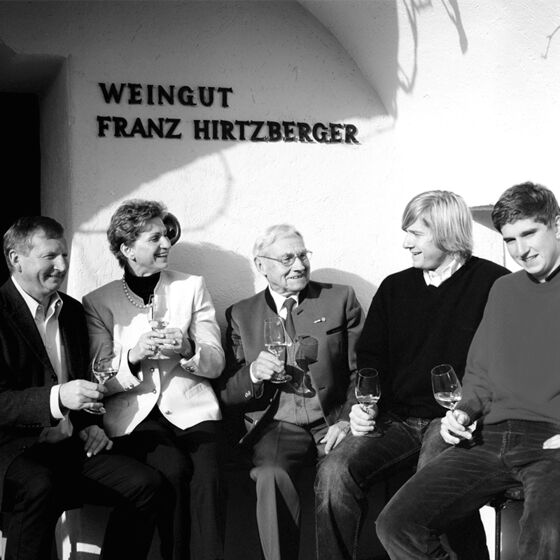
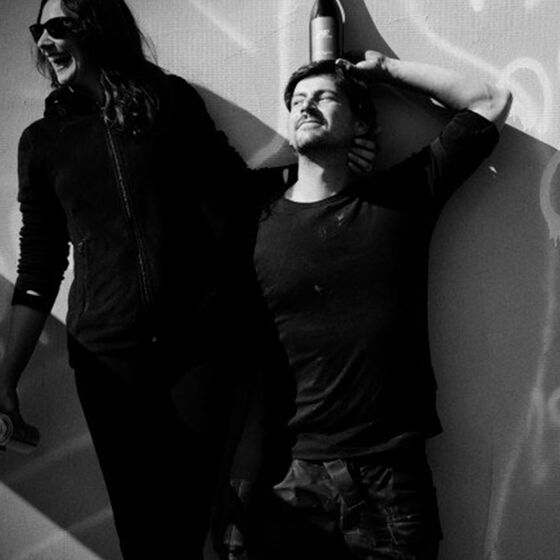
Ebner-Ebenauer
Nature writes our wines’ scripts, we just direct
“Shooting star” is a term that certainly means very little to Marion and Manfred Ebner-Ebenauer. The couple are too normal and down-to-earth, too firmly rooted in their home, the Weinviertel. Nevertheless, in 10 years they have managed to establish the back then completely unknown vineyard among the best in the growing area. Marion Ebenauer takes care of the winery and sales, her husband Manfred Ebner sees to the vineyard and cellar. Their wines are clear | straightforward | subtle, but at the same time anything but conformist.
Their single vineyard wines, which come from vines that are at least 30 years old with the oldest vine being between 50 and more than 60 years old, are right up the top. Especially the white grape varieties: Grüner Veltliner, Weißer Burgunder and Riesling.
New directions are being taken with the Black Edition. Developed in a small wooden barrel with long ageing on fine yeasts, the resulting wines are finely structured, profound and characterised by strong minerality. They need three or more years spent in the bottle but this pays off. One special wine is the Blanc de Blancs Vintage 2008 made based on the traditional method. It also attracted huge interest internationally and received top marks from renowned wine critics. An absolute must for sparkling wine fans. Which is similar to the term shooting star, perhaps not for the winemakers, but it certainly fits very well with the topic.

